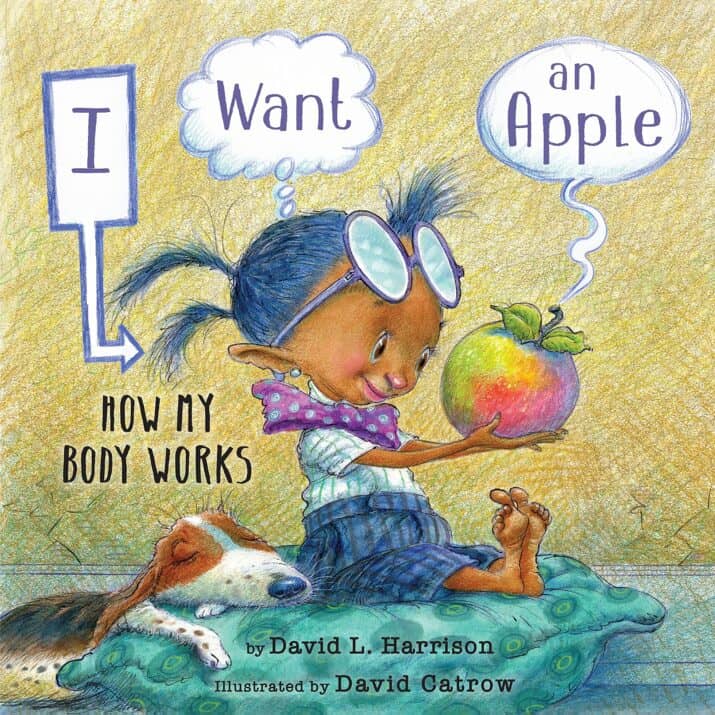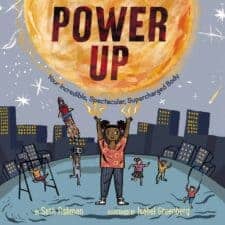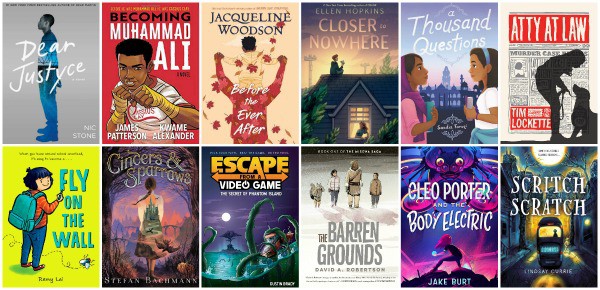Books About the Human Body
This post may contain affiliate links.
As kids grow, they learn the names of their body parts and what each part does for caregivers and each year, they understand more about the anatomy of the body, learning the five senses in preschool and later during elementary ages, about the organs and systems of the body. But, we can also support a child’s knowledge with books about the human body.
Children’s first science lesson is body-related, starting when they’re babies and we ask, “Where is your nose?” or “Where are your toes?”. Since we take our bodies with us, we continue to help children learn how to be healthy and take care of their bodies.
NOTE: Please remember one of the most important safety rules that you can teach kids is BODY SAFETY — what is and isn’t appropriate to touch and about consent.
Without further ado, here are recommended human body books for all ages. Happy reading!
Books About the Human Body
Picture Books (Ages 3 – 8)

The Nose, Toes, and Tummy Book written by Sally Nicholls, illustrated by Gosia Herba
As you read about the child’s nose, tummy, hands, and fingers, you’ll get to play along with the adults and kids as they beep noses, finger tickle, cheek kiss, and more. This is a playful board book about bodies.

I Want an Apple How My Body Works by David L. Harrison, illustrated by David Catrow
I love the punchy text and playful illustrations that show us step by step what happens in our senses when the little girl wants an apple. From seeing, touching, smelling, and tasting– all the way to digesting. “Open ears, hear it crunch. Busy tongue, taste the apple. Yum!“

Power Up: Your Incredible, Spectacular, Supercharged Body by Seth Fishman, illustrated by Isabel Greenberg
Use this book as an introduction to studying the body or energy –it’s sure to captivate students at school and kids at home. Isn’t that so wild!? I think the illustrations are spectacular.

The Poop Song by Eric Litwin, illustrated by Claudia Boldt
Rhyming, adorable, and fun — especially for the potty training kiddos.

All About the Heart written by Dr Remi Kowalski, illustrated by Tonia Composto
Learn all about the heart, the different sizes, animals that don’t have one, its protection, and how it works. Inviting graphic designs pop off the page with blues and reds as you read the kid-friendly body information about the beating of the heart, where the blood goes, and how to take care of it. Excellent.

Brains Not Just a Zombie Snack by Stacy McAnulty, illustrated by Matthew Rivera
A blue zombie girl shares facts about the brain while she tries to resist eating it. Learn how the brain receives messages from all five senses, how much it weighs, neurons and pathways, and the importance of the cerebrum, the gray stuff that is “mouthwateringly wrinkled”. It’s SO funny and fun.

The Good Germ Hotel: Meet Your Body’s Marvelous Microbes by Kim Sung-hwa and Kwon Su-jin, illustrated by Kim Ryung-eon
Informative yet dense, this is a nonfiction picture book that will work better in the upper elementary classroom. Narrated by a friendly gut bacterium, she explains all about her host hotel (a 9-year-old girl) and continues to explain her job and the job of other microorganisms that live inside the body, and briefly addresses antibiotics and probiotics.

Bodies Are Cool by Tyler Feder
Celebrate the body with a positive, inclusive representation of bodies of many different colors, shapes, noses, hair, and so forth with LGTBQ+ couples, mixed-race families, differently-abled people, and different ages, just to name a few kinds of representation. As you read, repeat the book’s refrain, “Bodies are cool.“

The Bare Naked Book by Kathy Stinson, illustrated by Melissa Cho
This updated version with vibrant illustrations shares about body parts and what they do then asks questions to have readers find their own body parts. It depicts a lot of diversity including LGBTQ+ families and different skin colors. And, as the title implies, there are naked bodies, too.

The Brain Is Kind of a Big Deal by Nick Seluk
Kids will learn so much about the brain in this well-done, humor-filled book with pacing and flow that will hold readers’ attention. Plus, they’ll love the cartoon panel illustrations and the text to picture ratio.

This Is My Brain! A Book on Neurodiversity written and illustrated by Elise Gravel
Colorful cartoon illustrations and kid-friendly language introduce readers to the brain, a squishy thing that has superpowers and controls everything the body does. Characters add their own dialogue to show how our brain learns, experiences senses, and feels. The book feels informative and playful instead of didactic. This book will make a great learning tool for parents and educators.
Middle-Grade Books (Ages 9 – 12)

Human Body Theater: A Nonfiction Revue by Maris Wicks
This nonfiction graphic novel ROCKS! It should be required reading for students studying the human body because the information presented this way is so memorable and understandable. I love Skeleton’s narration and the awesomely cute illustrations of every body system from the smallest cell parts to the biggest organs.

Human Body Learning Lab: Take an Inside Tour of How Your Anatomy Works by Betty Choi, M.D.
Colorful pages with kid-friendly writing, illustrations, diagrams, labels, photos, and more add up to my new favorite book on the human body! Start reading about the body’s cellular building blocks and keep reading about subjects like the circulatory system, respiratory system, nervous system, the five senses, the reproductive system, and more. Written by pediatrician Dr. Betty Choi, you’ll learn about different systems of the body and then apply what you learned with projects like making a cell, building an ear model, and filling the capillaries.

A Day in the Life of a Poo, a Gnu, and You A Laugh Out Loud Guide to Life on Earth by Mike Barfield and Jess Bradley
What child doesn’t like to read comics? Learn a lot about many things in this book of comics, diagrams, and secret diaries that explain topics like body parts, animals, and plants using cartoon panels and first-person narration mixed with “bigger picture” expository information. For example, read “A day in the life of” things like the eye, heart, a bee, anglerfish, and a toadstool. Or read “The secret diary” of a tornado.

A Shot in the Arm! by Don Brown
This well-written graphic novel narrates the history of infectious diseases like smallpox and the origins of vaccines. Narrated by Lady Mary Wortley Montagu, a British person who figured out that by putting a sick person’s scab on a healthy person, they would be inoculated against the illness, she recounts the history of diseases and how people figured out the same thing as her, even in ancient China, long before science caught up to their practices. Learn about scientists like Louis Pasteur and Edward Jenner and diseases like polio and rabies.

The How and Wow of the Human Body: From Your Tongue to Your Toes and all the Guts in Between by Mindy Thomas and Guy Raz, illustrated by Jack Teagle
From the hosts of the Wow in the World podcast comes a beautifully designed, fact-filled, engaging book all about the body. Starting at the top of your body (the head) and then moving on to the outside parts like the skin and nails to the insides like the immune and digestive system, you can’t help but learn a ton of information as you read the diagrams, facts, jokes, texts, quizzes, cartoons, and activities. Take your time because there’s a lot to learn and love on each page.

Factology: The Human Body by Button Books
Learn about the systems of the body, DNA, the senses, medicine, and more. This one isn’t my favorite — it’s too much information. It could be a good resource for libraries and classrooms.










